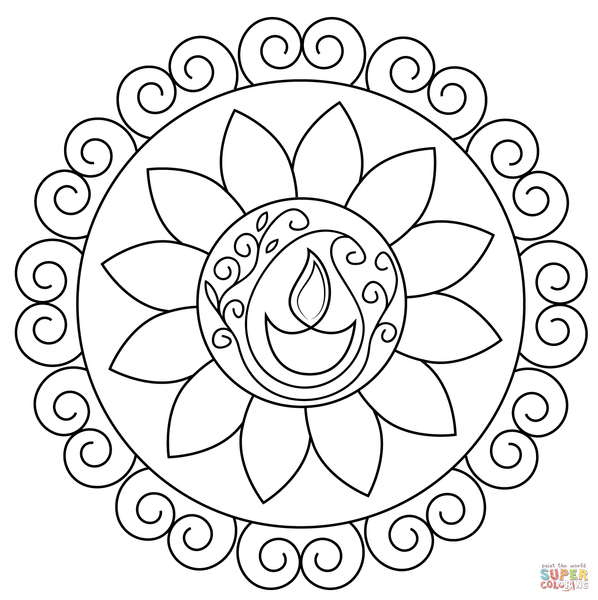
The Diwali Tradition You Can Bring Into Your Home
Diwali is the biggest celebration in India, a splendid time filled with lights, candles, food, gatherings with family and friends, prayers and rituals. However, one aspect of Diwali is lesser known beyond the subcontinent: Rangoli.
An art form consisting of patterns drawn on floors, using colored sand, rice, flower petals, rangoli is a more earthy (and inexpensive) interpretation of the Diwali spirit; it’s also regarded as sign of good luck. A traditional technique, practiced for generations, families like to have their designs passed down from family member to family member.
Design, fashion, and art are as embedded in Diwali celebrations as food, firecrackers, and parties. Women seek out the latest fashions, new saris, and festive party wear each Diwali season. Homes are cleaned and adorned, welcoming Lakshmi, goddess of wealth and prosperity. Finally, just the day before Diwali or during the celebratory period, rangoli is added as a final touch -- generally done by the women of the family.

The designs vary wildly from region to region in India: they can be deities, flowers, geometric, or intricate unique designs. Some households prefer more geometric patterns with symmetry whereas others opt for a symbol, such as a peacock or dia (candle). Given that Mela Artisans is all about preserving age-old techniques done by hand, we’re great fans of rangoli because it adds a creative, handmade element to the holiday.
If you’re looking for a fun way to get friends and family together, consider making rangoli on your floors this Diwali season. They can be simple, small, and scattered throughout the home or be one large masterpiece, often situated near an entrance.
1) Decide what base/outline material you’d like to use. You can use any of the following to create an outline of the design: white flour, rice flour, chalk, sand, or paint.
2) Identify the design you’d like to use. Rangoli can be done freehand. But if it’s your first time, or you’re simply looking for inspiration, there are rangoli templates available online to print and use as a reference. We recommend the following:




3) Using the outline material, create a template on the floor. Dry ingredients are best for your first rangoli; they’re easy to clean up, correct any mistakes, and will not stain floors.
4) After you’ve done the outline, add color to the inner details. We recommend natural materials, such as seeds, spices, leaves, flower petals, and grains, rather than using chemical dyes. Turmeric makes a lovely yellow-orange hue. Paprika is ideal for red. Get creative with what’s available at home, in the garden, and in the pantry.
5) Take a picture of your creation and share it with us on social media. Tag Mela Artisans (@melaartisans) on Instagram. We would love to see it!
An art form consisting of patterns drawn on floors, using colored sand, rice, flower petals, rangoli is a more earthy (and inexpensive) interpretation of the Diwali spirit; it’s also regarded as sign of good luck. A traditional technique, practiced for generations, families like to have their designs passed down from family member to family member.
Design, fashion, and art are as embedded in Diwali celebrations as food, firecrackers, and parties. Women seek out the latest fashions, new saris, and festive party wear each Diwali season. Homes are cleaned and adorned, welcoming Lakshmi, goddess of wealth and prosperity. Finally, just the day before Diwali or during the celebratory period, rangoli is added as a final touch -- generally done by the women of the family.

The designs vary wildly from region to region in India: they can be deities, flowers, geometric, or intricate unique designs. Some households prefer more geometric patterns with symmetry whereas others opt for a symbol, such as a peacock or dia (candle). Given that Mela Artisans is all about preserving age-old techniques done by hand, we’re great fans of rangoli because it adds a creative, handmade element to the holiday.
If you’re looking for a fun way to get friends and family together, consider making rangoli on your floors this Diwali season. They can be simple, small, and scattered throughout the home or be one large masterpiece, often situated near an entrance.
Here’s a step-by-step by process:




Here are some rangoli designs that made us envious and will get your creativity running!


